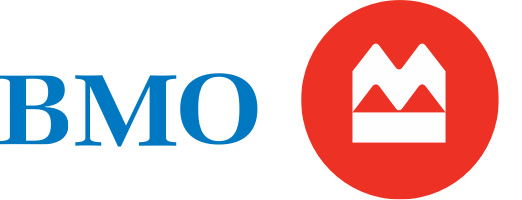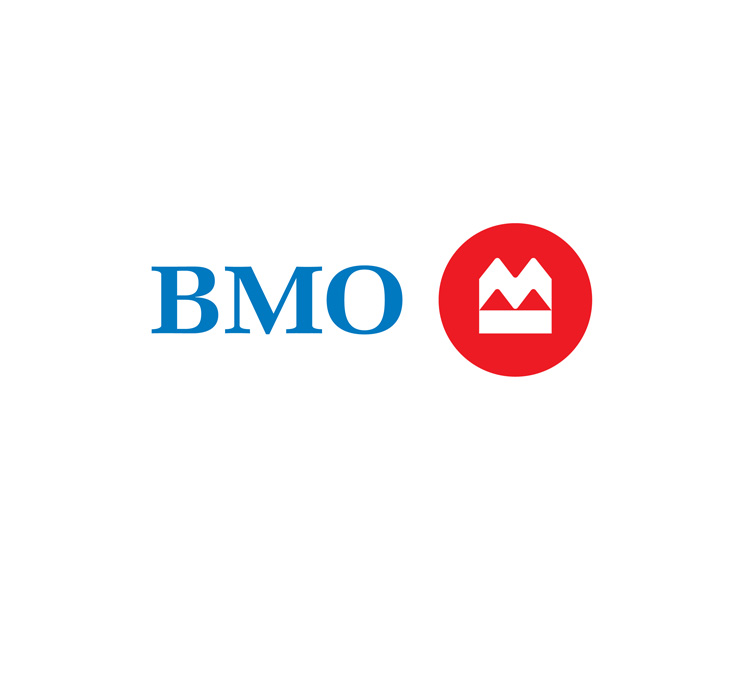
Buy or Lease? What You Need to Know
-
bookmark
-
print



The buy or lease decision amounts to weighing your risks and opportunities. Is it better to take cash off your balance sheet and own your equipment outright, or should you borrow at a lower rate to reinvest in projects that could yield a higher rate of return in the long run? Are the tax benefits of one better for you than the other?
Whether you decide to lease equipment or purchase it outright, each option comes with its own set of potential opportunities and risks. You can prepare to make the decision by answering a few key questions:
- What is the opportunity cost of capital? That is, can you reinvest the capital allocated for equipment purchases into other parts of the business to generate a higher rate of return?
- What is your interest rate policy? Have you weighed the benefits of adding fixed-rate debt versus using a revolving line of credit with a variable interest rate?
- What is your equipment replacement cycle? How long do you plan to use the equipment?
Acquiring the right equipment can help improve processes and productivity, and even foster innovation. But to get there, you need a plan that addresses both your short- and long-term needs. Consider the following pros and cons for each option.
Purchasing Advantages
- Tax advantages. Under the Tax Cuts & Jobs Act of 2017
 , companies can take advantage of accelerated depreciation to deduct up to 100% of the purchase cost, but this causes depreciation to decrease in later years. A company considering the purchase option should evaluate its projections for current and future profits to determine the best time for using this tax benefit, as they might not be as profitable now as they expect to be in the future.
, companies can take advantage of accelerated depreciation to deduct up to 100% of the purchase cost, but this causes depreciation to decrease in later years. A company considering the purchase option should evaluate its projections for current and future profits to determine the best time for using this tax benefit, as they might not be as profitable now as they expect to be in the future.
- Flexibility. You own the equipment and can do with it what you please, including selling and replacing it with newer equipment.
- Maintenance. When purchasing equipment, you can maintain it according to your own guidelines.
Purchasing Disadvantages
- Higher initial expense. In the long run, purchasing equipment with cash may be less expensive than leasing, but you’ll have to spend more up front. If you take out a loan to purchase equipment, you’ll typically have to make a down payment and will be responsible for interest payments.
- Less available liquidity. Because of the higher upfront costs, you might have less cash available to reinvest in other parts of the business.
- Obsolescence. Most equipment eventually becomes obsolete, with some types—such as computer technology—aging faster than others. In some cases, you may need to replace equipment earlier than expected, even if you’re still paying off the loan. It also might be difficult to sell outdated equipment by the time the loan is paid off.
Leasing Advantages
- Tax advantages. When a company leases equipment it can deduct the entire lease payment over the term of the lease.
- Lower interest rate. Borrowers can often trade the depreciation benefits to the lender in return for a lower interest rate, which lowers the total cost of the lease.
- Fixed interest rate. Because the interest rate is fixed, you can easily calculate lease costs for the lease term, making budgeting easier and effectively hedging some portion of your interest rate risk. This is especially important during rising interest rate or inflationary environments.
- No upfront costs. You can finance up to 100% of the purchase price instead of making a down payment.
- More available liquidity. Lease equipment won’t tie up your cash, giving you the flexibility to reinvest in other parts of the business to generate a higher rate of return.
- More flexible payment options. You can customize lease terms to match equipment use and life expectancy, as well as your company’s unique needs.
- Easier equipment upgrades. With a short-term lease, you can pass the burden of unloading obsolete equipment to the lessor.
Leasing Disadvantages
- Payment obligation for the entire term. You must pay the lease for the entire term, even if you stop using the equipment before the lease expires. Some leases allow companies to cancel the lease or pay it off early, but these options often come with expensive termination fees. (Some loans also contain fees for paying off the loan early.)
- Potentially higher overall costs. How much you end up paying depends on interest rates, the inflation rate and your opportunity costs.
- Maintenance requirements. Lenders often require you to maintain leased equipment to certain standards, including keeping accurate maintenance records to ensure you comply with those requirements.
Deciding whether to purchase or lease capital equipment is an important decision that has implications for your company’s long-term financial health. So be sure to do your homework and review your particular circumstances with your independent legal and tax advisors before you make your decision.
The buy or lease decision amounts to weighing your risks and opportunities. Is it better to take cash off your balance sheet and own your equipment outright, or should you borrow at a lower rate to reinvest in projects that could yield a higher rate of return in the long run? Are the tax benefits of one better for you than the other?
Whether you decide to lease equipment or purchase it outright, each option comes with its own set of potential opportunities and risks. You can prepare to make the decision by answering a few key questions:
- What is the opportunity cost of capital? That is, can you reinvest the capital allocated for equipment purchases into other parts of the business to generate a higher rate of return?
- What is your interest rate policy? Have you weighed the benefits of adding fixed-rate debt versus using a revolving line of credit with a variable interest rate?
- What is your equipment replacement cycle? How long do you plan to use the equipment?
Acquiring the right equipment can help improve processes and productivity, and even foster innovation. But to get there, you need a plan that addresses both your short- and long-term needs. Consider the following pros and cons for each option.
Purchasing Advantages
- Tax advantages. Under the Tax Cuts & Jobs Act of 2017
 , companies can take advantage of accelerated depreciation to deduct up to 100% of the purchase cost, but this causes depreciation to decrease in later years. A company considering the purchase option should evaluate its projections for current and future profits to determine the best time for using this tax benefit, as they might not be as profitable now as they expect to be in the future.
, companies can take advantage of accelerated depreciation to deduct up to 100% of the purchase cost, but this causes depreciation to decrease in later years. A company considering the purchase option should evaluate its projections for current and future profits to determine the best time for using this tax benefit, as they might not be as profitable now as they expect to be in the future.
- Flexibility. You own the equipment and can do with it what you please, including selling and replacing it with newer equipment.
- Maintenance. When purchasing equipment, you can maintain it according to your own guidelines.
Purchasing Disadvantages
- Higher initial expense. In the long run, purchasing equipment with cash may be less expensive than leasing, but you’ll have to spend more up front. If you take out a loan to purchase equipment, you’ll typically have to make a down payment and will be responsible for interest payments.
- Less available liquidity. Because of the higher upfront costs, you might have less cash available to reinvest in other parts of the business.
- Obsolescence. Most equipment eventually becomes obsolete, with some types—such as computer technology—aging faster than others. In some cases, you may need to replace equipment earlier than expected, even if you’re still paying off the loan. It also might be difficult to sell outdated equipment by the time the loan is paid off.
Leasing Advantages
- Tax advantages. When a company leases equipment it can deduct the entire lease payment over the term of the lease.
- Lower interest rate. Borrowers can often trade the depreciation benefits to the lender in return for a lower interest rate, which lowers the total cost of the lease.
- Fixed interest rate. Because the interest rate is fixed, you can easily calculate lease costs for the lease term, making budgeting easier and effectively hedging some portion of your interest rate risk. This is especially important during rising interest rate or inflationary environments.
- No upfront costs. You can finance up to 100% of the purchase price instead of making a down payment.
- More available liquidity. Lease equipment won’t tie up your cash, giving you the flexibility to reinvest in other parts of the business to generate a higher rate of return.
- More flexible payment options. You can customize lease terms to match equipment use and life expectancy, as well as your company’s unique needs.
- Easier equipment upgrades. With a short-term lease, you can pass the burden of unloading obsolete equipment to the lessor.
Leasing Disadvantages
- Payment obligation for the entire term. You must pay the lease for the entire term, even if you stop using the equipment before the lease expires. Some leases allow companies to cancel the lease or pay it off early, but these options often come with expensive termination fees. (Some loans also contain fees for paying off the loan early.)
- Potentially higher overall costs. How much you end up paying depends on interest rates, the inflation rate and your opportunity costs.
- Maintenance requirements. Lenders often require you to maintain leased equipment to certain standards, including keeping accurate maintenance records to ensure you comply with those requirements.
Deciding whether to purchase or lease capital equipment is an important decision that has implications for your company’s long-term financial health. So be sure to do your homework and review your particular circumstances with your independent legal and tax advisors before you make your decision.
More Insights
Tell us three simple things to
customize your experience.






Contact Us
Banking products are subject to approval and are provided in the United States by BMO Bank N.A. Member FDIC. BMO Commercial Bank is a trade name used in the United States by BMO Bank N.A. Member FDIC. BMO Sponsor Finance is a trade name used by BMO Financial Corp. and its affiliates.
Please note important disclosures for content produced by BMO Capital Markets. BMO Capital Markets Regulatory | BMOCMC Fixed Income Commentary Disclosure | BMOCMC FICC Macro Strategy Commentary Disclosure | Research Disclosure Statements.
BMO Capital Markets is a trade name used by BMO Financial Group for the wholesale banking businesses of Bank of Montreal, BMO Bank N.A. (member FDIC), Bank of Montreal Europe p.l.c., and Bank of Montreal (China) Co. Ltd, the institutional broker dealer business of BMO Capital Markets Corp. (Member FINRA and SIPC) and the agency broker dealer business of Clearpool Execution Services, LLC (Member FINRA and SIPC) in the U.S. , and the institutional broker dealer businesses of BMO Nesbitt Burns Inc. (Member Canadian Investment Regulatory Organization and Member Canadian Investor Protection Fund) in Canada and Asia, Bank of Montreal Europe p.l.c. (authorised and regulated by the Central Bank of Ireland) in Europe and BMO Capital Markets Limited (authorised and regulated by the Financial Conduct Authority) in the UK and Australia and carbon credit origination, sustainability advisory services and environmental solutions provided by Bank of Montreal, BMO Radicle Inc., and Carbon Farmers Australia Pty Ltd. (ACN 136 799 221 AFSL 430135) in Australia. "Nesbitt Burns" is a registered trademark of BMO Nesbitt Burns Inc, used under license. "BMO Capital Markets" is a trademark of Bank of Montreal, used under license. "BMO (M-Bar roundel symbol)" is a registered trademark of Bank of Montreal, used under license.
® Registered trademark of Bank of Montreal in the United States, Canada and elsewhere.
™ Trademark of Bank of Montreal in the United States and Canada.
The material contained in articles posted on this website is intended as a general market commentary. The opinions, estimates and projections, if any, contained in these articles are those of the authors and may differ from those of other BMO Commercial Bank employees and affiliates. BMO Commercial Bank endeavors to ensure that the contents have been compiled or derived from sources that it believes to be reliable and which it believes contain information and opinions which are accurate and complete. However, the authors and BMO Commercial Bank take no responsibility for any errors or omissions and do not guarantee their accuracy or completeness. These articles are for informational purposes only.
This information is not intended to be tax or legal advice. This information cannot be used by any taxpayer for the purpose of avoiding tax penalties that may be imposed on the taxpayer. This information is being used to support the promotion or marketing of the planning strategies discussed herein. BMO Bank N.A. and its affiliates do not provide legal or tax advice to clients. You should review your particular circumstances with your independent legal and tax advisors.
Third party web sites may have privacy and security policies different from BMO. Links to other web sites do not imply the endorsement or approval of such web sites. Please review the privacy and security policies of web sites reached through links from BMO web sites.
Notice to Customers
To help the government fight the funding of terrorism and money laundering activities, federal law (USA Patriot Act (Title III of Pub. L. 107 56 (signed into law October 26, 2001)) requires all financial organizations to obtain, verify and record information that identifies each person who opens an account. When you open an account, we will ask for your name, address, date of birth and other information that will allow us to identify you. We may also ask you to provide a copy of your driver's license or other identifying documents. For each business or entity that opens an account, we will ask for your name, address and other information that will allow us to identify the entity. We may also ask you to provide a copy of your certificate of incorporation (or similar document) or other identifying documents. The information you provide in this form may be used to perform a credit check and verify your identity by using internal sources and third-party vendors. If the requested information is not provided within 30 calendar days, the account will be subject to closure.

